Abstract
Nearly two decades of clinical research at the Oregon Social Learning Center (OSLC) have helped to shape a theory of antisocial behavior in boys. Models depicting the theory are presented and discussed. In addition, family management variables such as “discipline,” “monitoring,” “positive parenting,” and “problem solving” are described as used in clinical applications. Total aversive behavior (TAB), based on home observations, and parent daily report (PDR), based on telephone interviews, are examined as outcome indicators for a variety of studies investigating the efficacy of the OSLC social interactional therapy. Several recent reports of treatment for adjudicated adolescents and their families are included; law violations are the dependent measures in those studies. Examples of the interface between clinical work and theory at OSLC are presented. Questions of generalization of the clinical methodology to large urban populations, and access to parents who most need to learn the parenting techniques are noted.
Keywords: delinquency, prevention, parent training, family management
Full text
PDF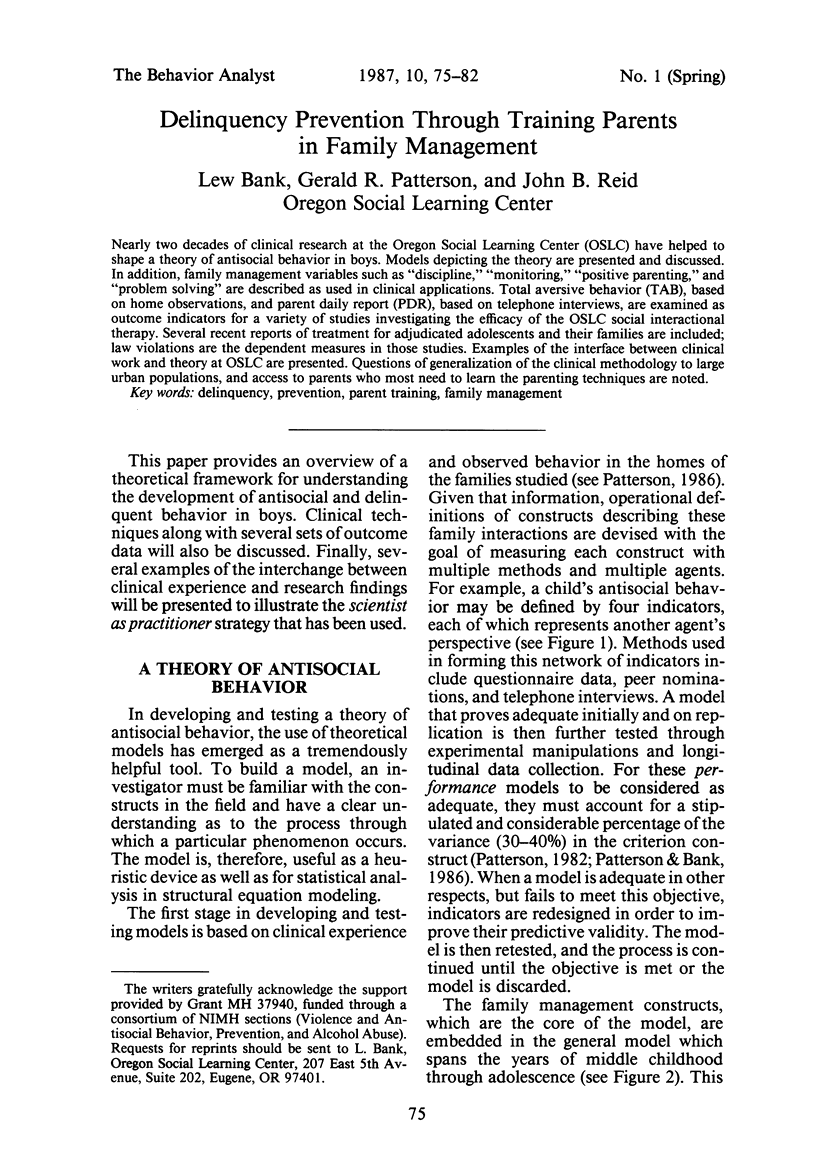
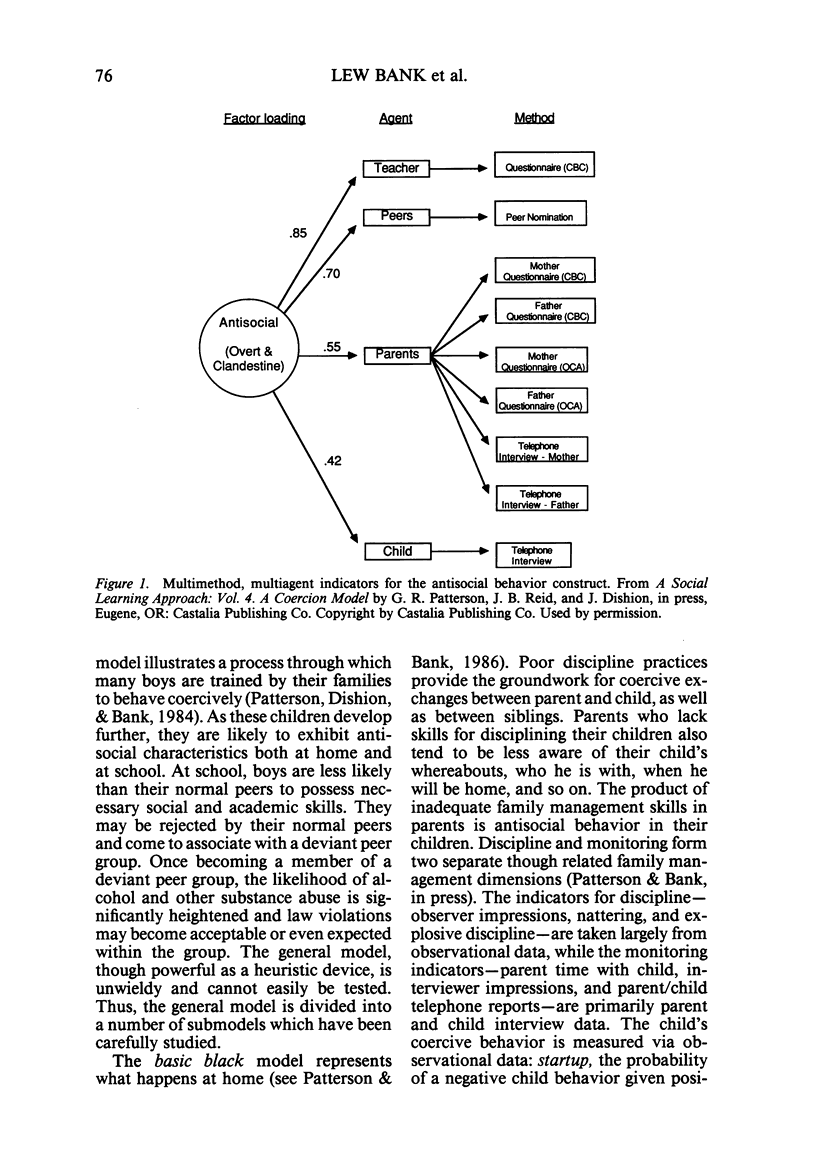
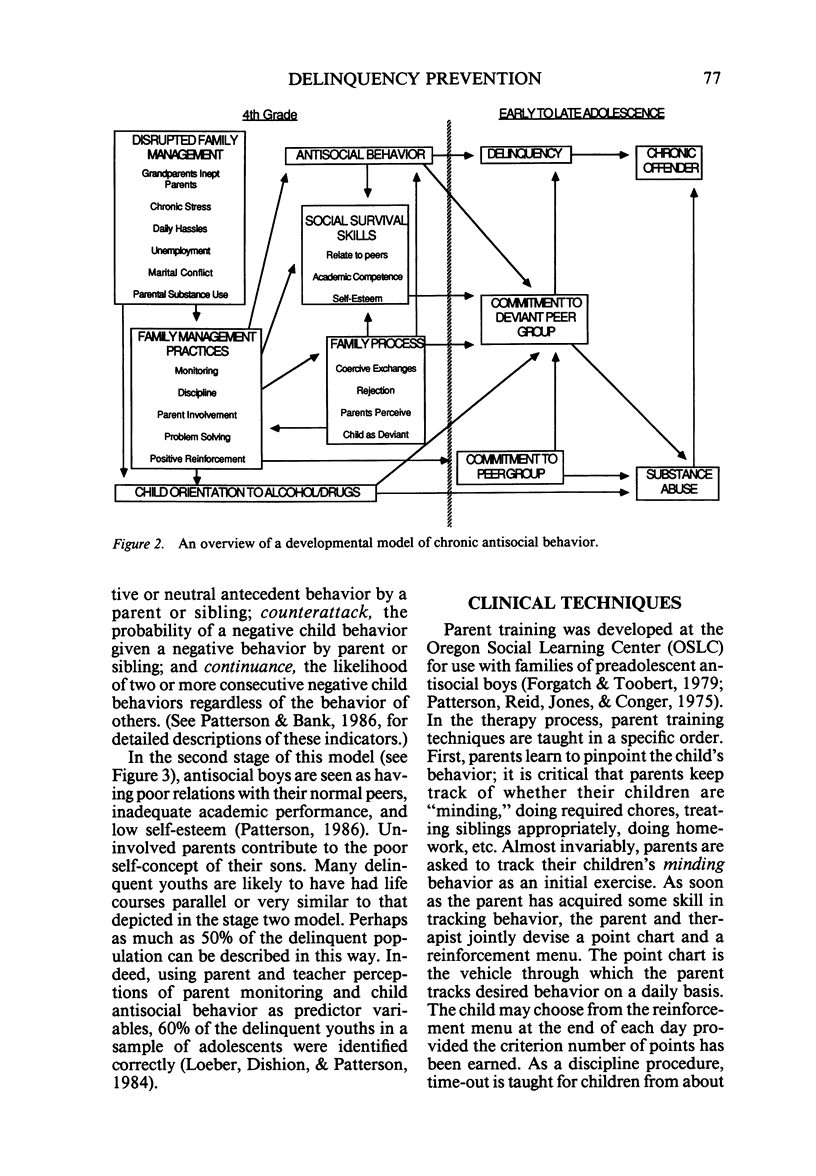
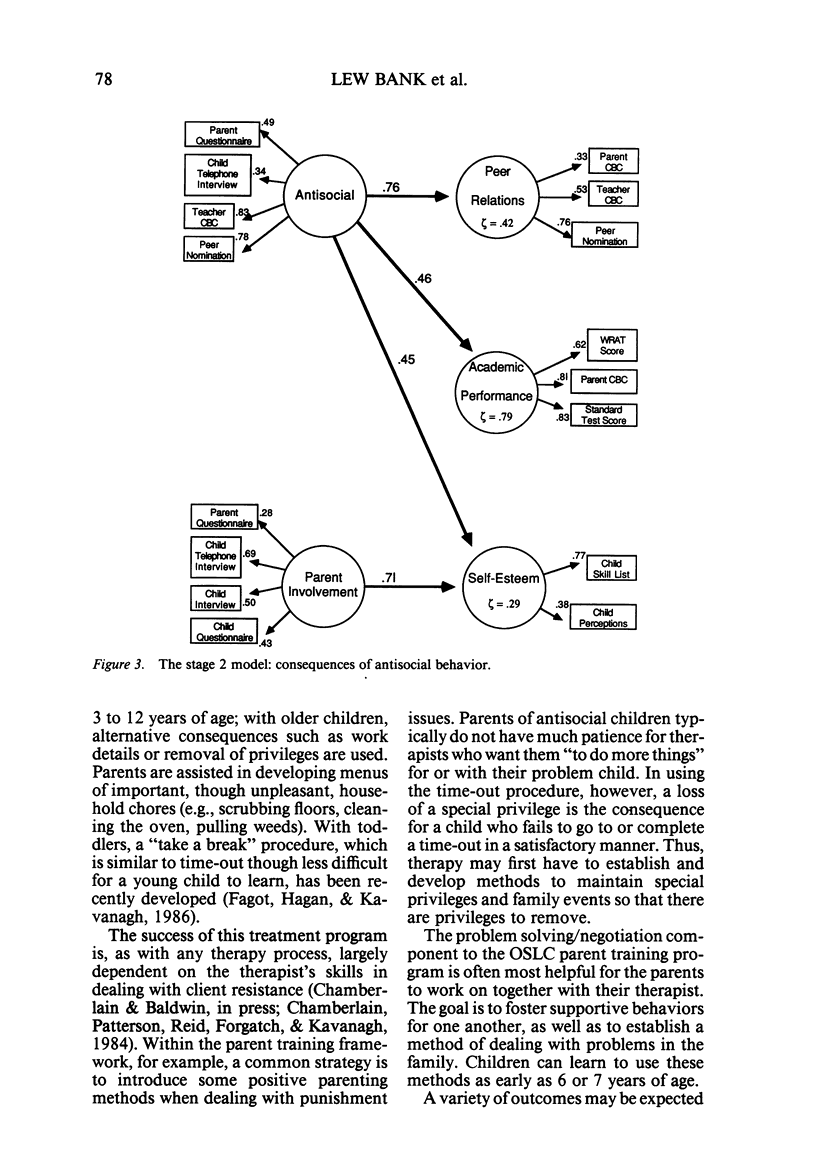


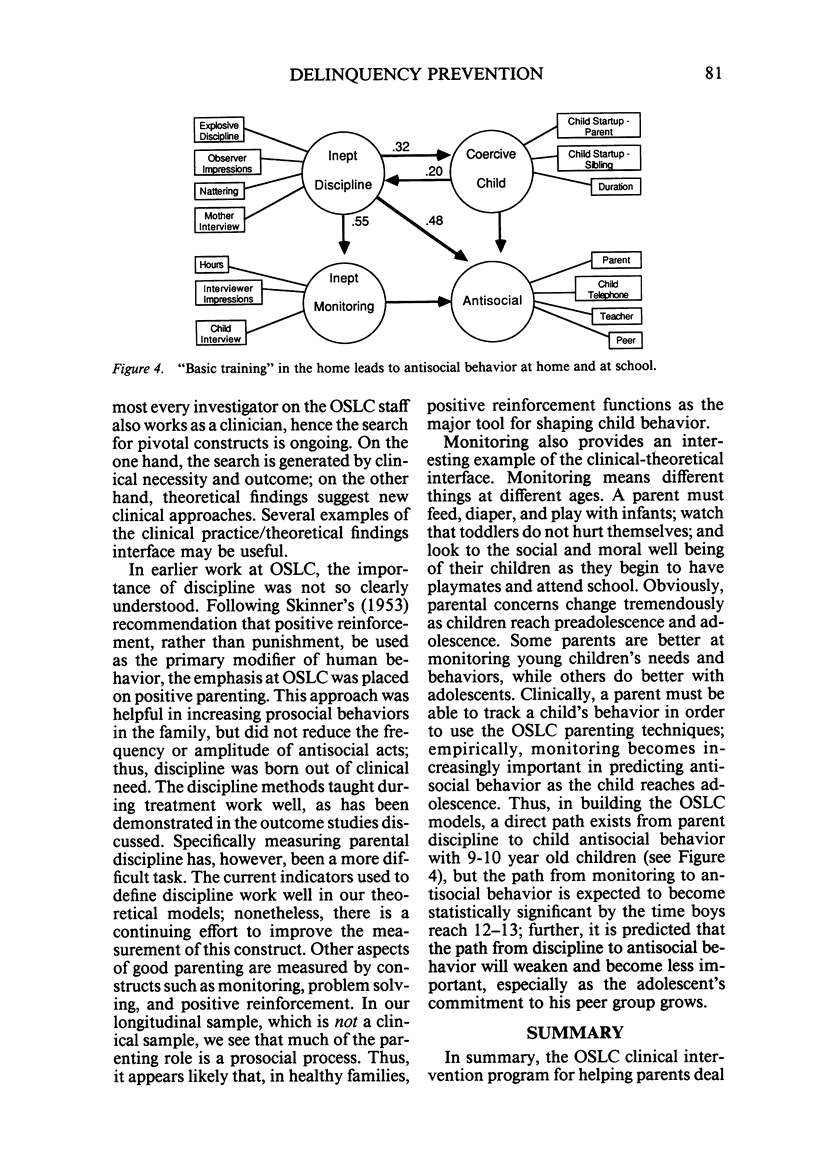
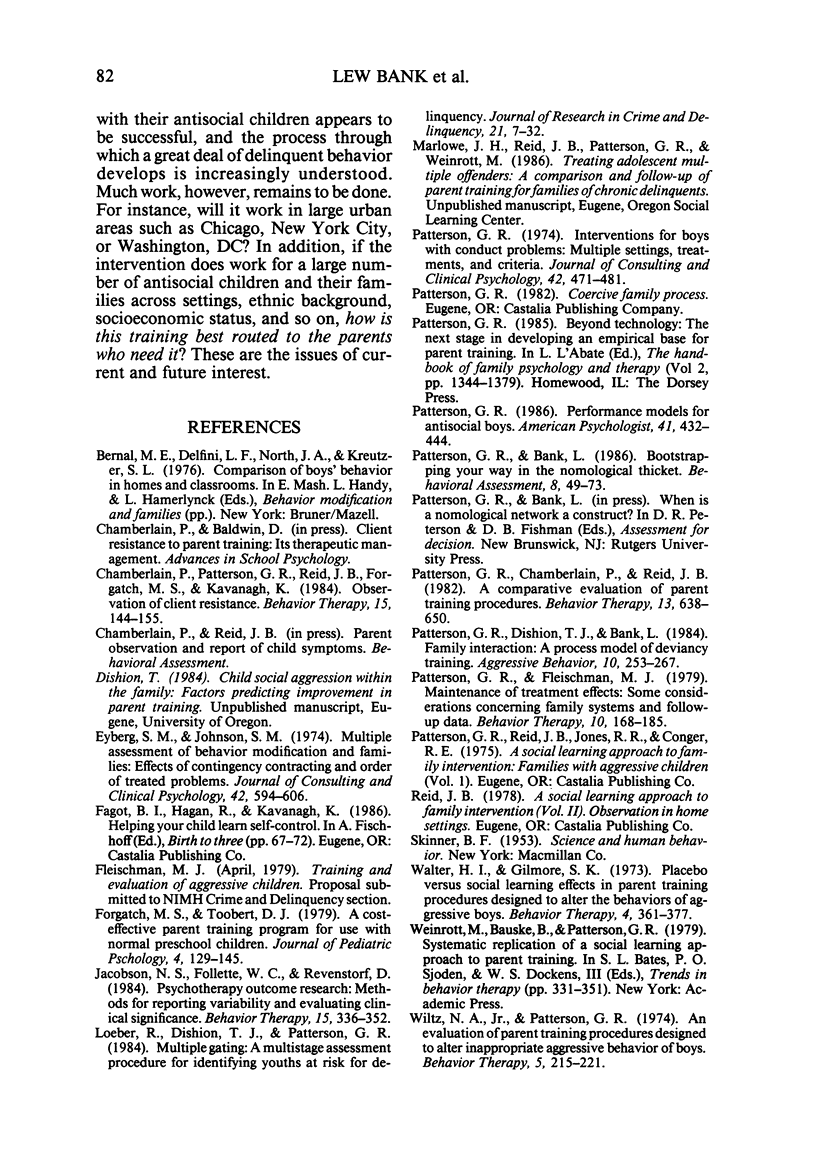
Selected References
These references are in PubMed. This may not be the complete list of references from this article.
- Eyberg S. M., Johnson S. M. Multiple assessment of behavior modification with families: effects of contingency contracting and order of treated problems. J Consult Clin Psychol. 1974 Aug;42(4):594–606. doi: 10.1037/h0036723. [DOI] [PubMed] [Google Scholar]
- Patterson G. R. Interventions for boys with conduct problems: multiple settings, treatments, and criteria. J Consult Clin Psychol. 1974 Aug;42(4):471–481. doi: 10.1037/h0036731. [DOI] [PubMed] [Google Scholar]
- Patterson G. R. Performance models for antisocial boys. Am Psychol. 1986 Apr;41(4):432–444. doi: 10.1037//0003-066x.41.4.432. [DOI] [PubMed] [Google Scholar]


